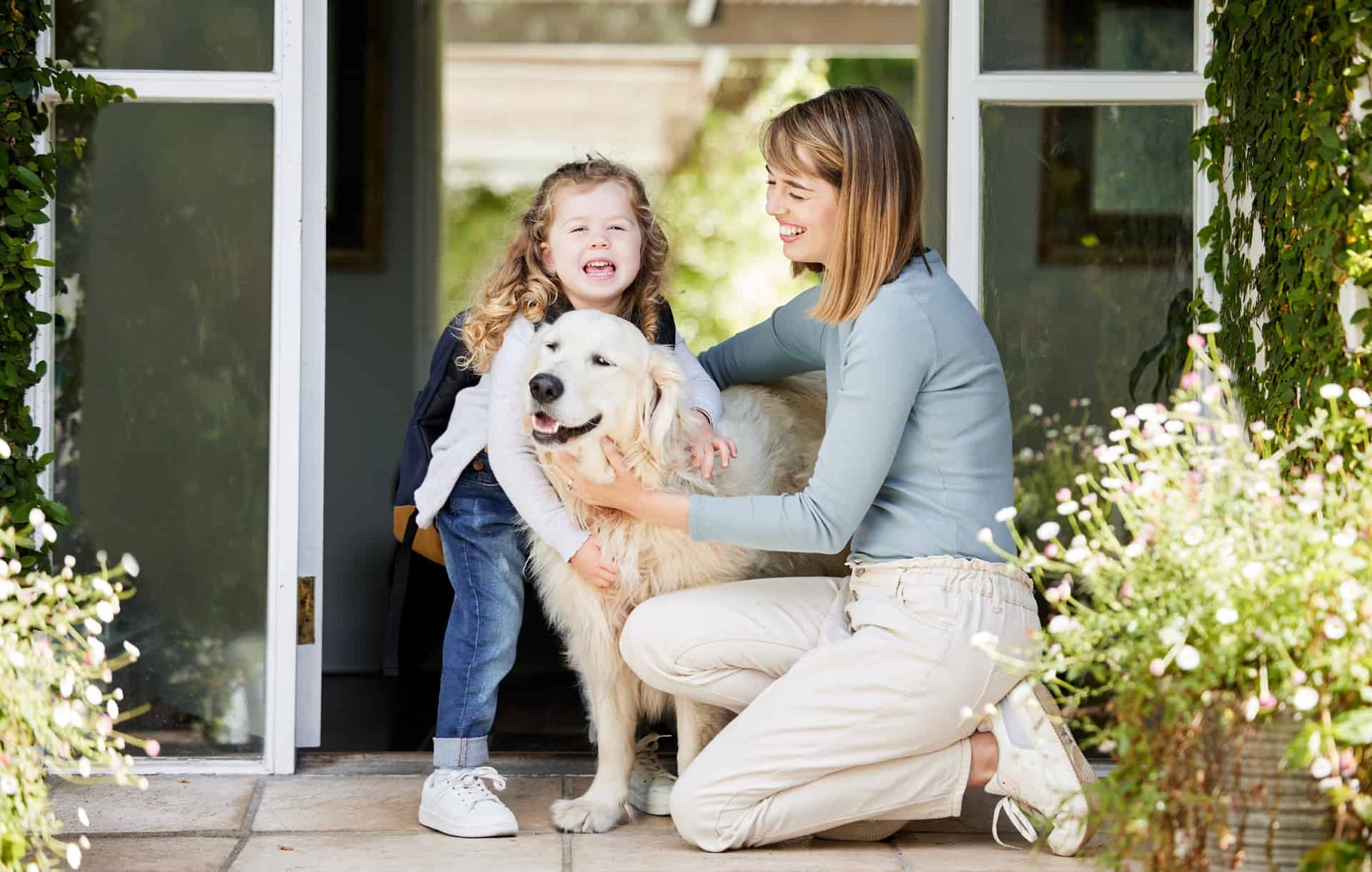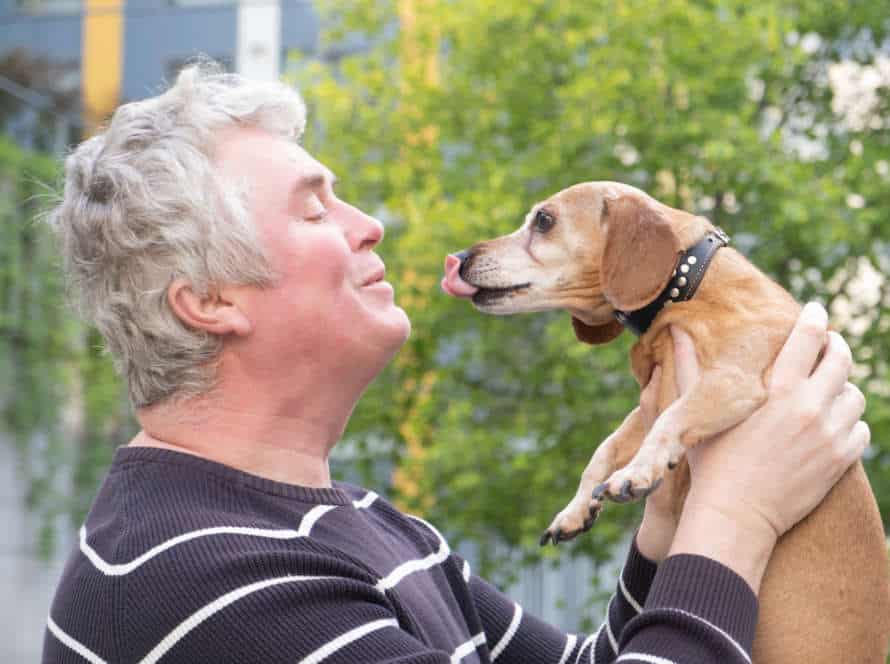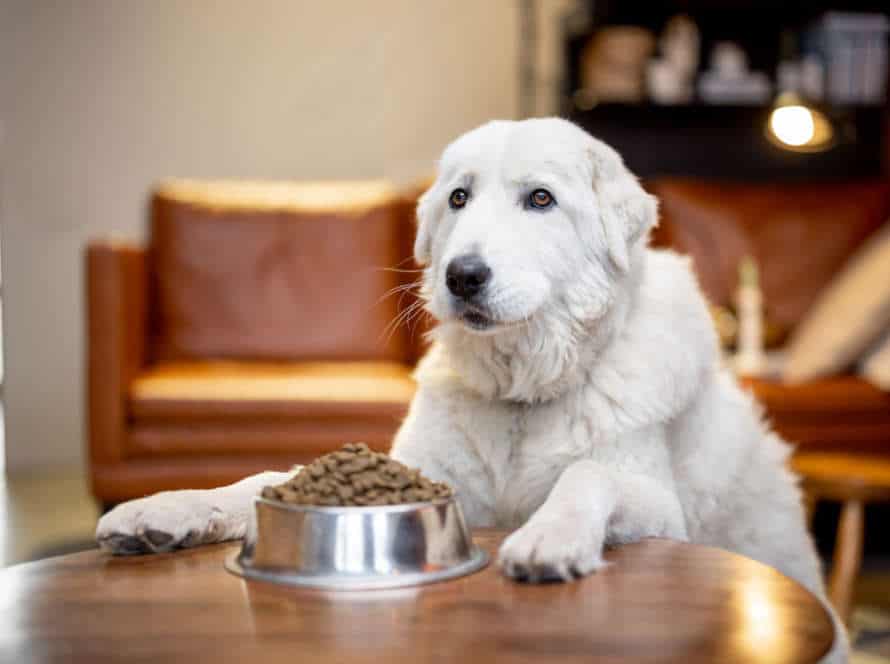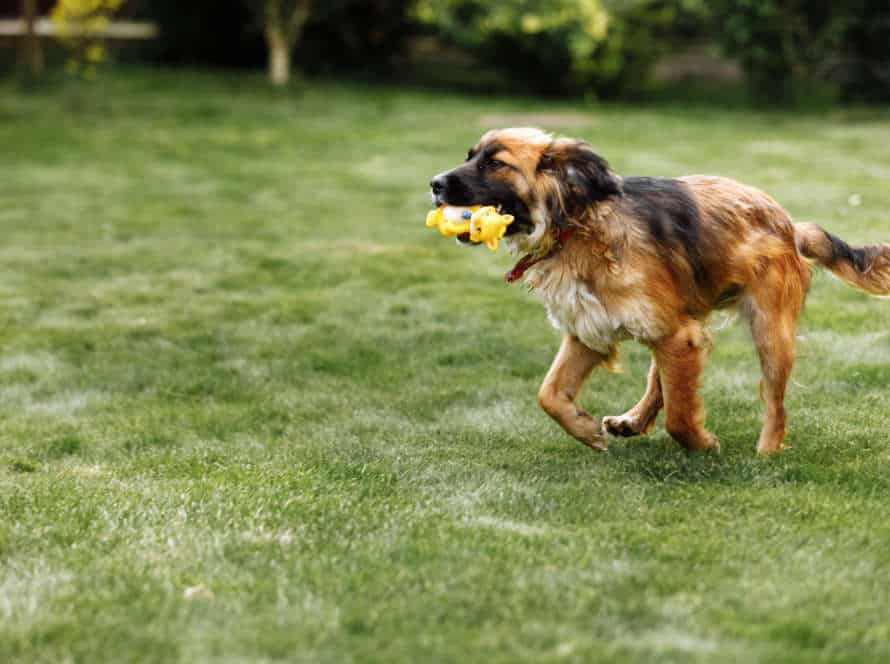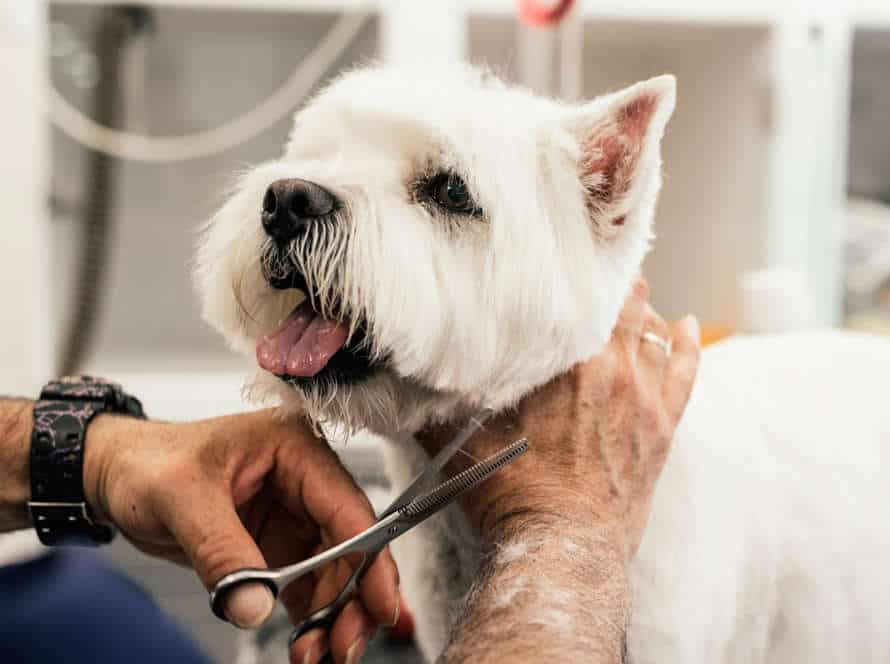The Power of Trust: Transforming Your Dog’s Behavior
The Power of Trust is a mighty tool to alter your pup’s conduct and reinforce your bond with them. Here are some tips to foster trust and transform their behavior:
- Be consistent in training and rewards. This will help them comprehend what’s expected of them.
- Positive reinforcement with treats/praise encourages good behavior and trust.
- Patience is essential, as training needs time.
- Spend quality time with them to fortify your bond and build trust.
- Communicate your expectations and boundaries to avoid confusion and build trust.
Trust has the power to create a constructive and fulfilling connection with your pup.
Understanding Trust-Based Dog Training
Trust-based dog training is essential for developing a strong connection between you and your pup. It’s a skill that focuses on building a bond of trust between the dog and the human. Learn how it works, its techniques and its long-term impacts! This article will explore the power of trust-based dog training.
The Science behind Trust-Based Dog Training
Trust-based dog training centers around creating trust and positive reinforcement, instead of punishment and dominance. It is based on operant conditioning, which involves rewarding desired behaviors and discouraging undesired ones.
This method focuses on the dog’s emotional and mental state, striving to make a safe environment for them to learn and grow. By forming a trusting relationship between dog and trainer, it can help with obedience and reduce behavior issues.
Trust-based training is a patient process that needs consistency, positive reinforcement, and trust.
Pro Tip: Patience is essential – give the dog time to learn and reward good behavior to reinforce trust and aid obedience.
Benefits of Trust-Based Training Approach for Dogs and Owners
The Trust-Based Training Approach is a unique dog training method. It emphasizes positive reinforcement and mutual respect between dogs and owners. This approach is great for both the dog and the owner. It strengthens their bond and builds trust. This leads to long-term behavioral changes.
The principle behind this approach is that dogs learn and behave better when treated with kindness and patience. Positive reinforcement is more important than punishment and aggression.
Trust-based training has huge benefits. It leads to long-lasting, positive behavioral changes in dogs. It also creates a healthier and loving relationship between the dog and the owner.
Plus, it focuses on communication. This helps the owner understand the dog’s needs and the dog learns to recognize and respect the owner’s commands.
Pro Tip: If using the trust-based training approach, make sure to establish trust and communication first. Then move on to more advanced commands.
How Trust-Based Training is Different from Dominance-Based Training
Trust-based and dominance-based training are two completely different methods of teaching dogs. Dominance-based training believes that dogs should be controlled in order to train them. It often relies on punishment or reprimand, which can hurt the pup and damage the trust between the dog and its human.
Trust-based training, however, sees dogs as social creatures that respond well to positive reinforcement and trust. This technique focuses on building a strong relationship between the pup and its owner. Positive reinforcement, like treats and compliments, is used to reward good behavior, and the pup learns through happy experiences.
Trust-based training is more humane and successful. It makes the connection between pup and human stronger, leading to a relaxed and pleasant training session for everyone.
Building Trust in Your Dog
Trust is essential for transforming your pup’s behavior. To form a strong bond of trust with them, you must make sure they are willing to follow your orders. Trust will make them feel safe and give them positive reinforcement. But how do you establish this trust?
Creating a Safe and Nurturing Environment for your Dog to Thrive
Creating a secure and caring atmosphere for your pup is essential for its growth. Acquiring trust with your dog is a powerful way to make this happen and help your pup do well. Here’s how to build trust:
- Be steady in your actions and reactions with your pup.
- Offer a consistent routine, like regular meals and exercise.
- Demonstrate love and fondness like through praise and physical contact like pats or tummy rubs.
- Utilize positive reinforcement techniques, like rewards and treats, to promote good behavior.
- Listen actively to your pup’s body language and vocalizations.
By gaining trust with your pup, you can modify its conduct and form a strong bond forever. Tip: Make training fun by including games and treats to keep your pup alert and encouraged.
Importance of Positive Reinforcement in Trust-Based Training
Positive reinforcement is essential for trust-based dog training. It can be a great help with transforming your pup’s behavior.
Why is it so important?
- Positive reinforcement such as treats or compliments, makes your dog more likely to do desirable things again.
- It encourages your dog to think and take part in the training, instead of just avoiding punishments.
- Positive reinforcement makes the training environment safe and enjoyable, building trust between you and your pup.
Remember, trust needs time and patience to be built, but it’s worth it when you have a content, well-mannered dog.
Establishing Clear Communication and Boundaries with Your Dog through Trust-based Training
Creating a connection and setting parameters with your pup through trust-based training is key for making a solid and long-term relationship. This technique is all about trust and assurance between you and your dog, instead of using strength or fear to control their behavior.
A few tips to build trust in your pup through trust-based training:
- Reward desirable conduct with positive reinforcement like treats or admiration.
- Be steady in your training and communication with your dog, using clear instructions.
- Make a safe and pleasant atmosphere for your dog to learn and grow in.
- Acknowledge your dog’s boundaries and limitations, permitting them to learn and make mistakes at their own speed.
Building trust in your dog with trust-based training requires time, patience, and practice, but the outcomes are worth it. This not only yields a well-mannered dog but also a strong and loving bond with your furry companion.
Pro Tip: Don’t forget to take breaks, have fun, and delight in the process of making a meaningful relationship with your dog!
Transforming Your Dog’s Behavior with Trust-Based Training
Training your pup is vital for any pet parent. Trust-based training can educate your dog to obey and obey commands. This type of training uses the strength of trust to form a close connection with your pet. Let’s dive deeper into how trust-based training can help alter your dog’s behaviour.
Common Behavioral Issues Addressed with Trust-Based Training
Trust-based training is an impactful way to manage common doggie behavior problems. It emphasizes on forming a strong bond between pup and trainer built on trust, respect, and communication – rather than rewards or punishments.
Fear and anxiety can be tackled with trust-based training. It gives dogs a feeling of control over their surroundings, calming their fears and worries.
Aggression can also be addressed. Trust-based training teaches pooches to express themselves without being violent or aggressive.
Separation anxiety can be reduced with trust-based training. It helps canine companions develop a sense of confidence and independence.
Hyperactivity can also be curbed. Trust-based training assists in teaching dogs self-control and concentration.
When using trust-based training, it is possible to improve your dog’s behavior. This will build a solid relationship based on mutual trust, respect, and love.
Step-by-step Guide to incorporating Trust-Based Training in Behavior Modification
Trust-based training can be a great way to alter your pup’s behavior, and create a strong bond. Follow these steps for best results:
- Create a stress-free environment for learning.
- Utilize positive reinforcement techniques to engage with your dog.
- Obedience training and rewarding good behavior builds trust.
- Correct undesirable habits without being aversive.
- Be patient and loving when working with your pup.
With dedication, trust-based training will help you and your furry friend build a beautiful bond.
Tip: Professional dog trainers can help you incorporate trust-based training into your dog’s modification plan.
Measuring Success in Trust-Based Training
Measuring success in trust-based training isn’t about making your dog obey commands. It’s about strengthening the bond between you and your pup. Trust-based methods focus on a mutual respect to bring about behaviour change. Here are signs it’s working:
- Increase in trust. Does your dog trust you more? Is it willing to engage in activities it usually avoids?
- Calming down. Notice if your dog is barking & jumping less.
- Improved behaviour. Do you see progress in your pup’s behaviour that matches your training goals?
Trust-based training is different from traditional methods that rely on control. Instead of treating your dog like a machine, consider its feelings and personality. Pro Tip: Trust-based training needs patience, consistency, and respect for the dog’s independence.
Training Tips and Tricks for Effective Trust-Based Training
Foster trust with your pup! Training with trust is both humane and effective. To make this work, build a trusting relationship with your four-legged friend. Use positive reinforcement and chat often with your pup. Here are some tips to help your dog learn trust-based behaviors and form a strong bond with you:
Equipment Needed for Successful Trust-Based Training
For successful trust-based training of your pup, you’ll need the right equipment. Here are some must-haves:
- A comfortable, fitting collar and leash.
- Rewards and treats your pup loves.
- Interactive toys for physical and mental stimulation.
- A clicker (optional) for clicker training.
- Plus, a crate or designated space that gives your dog privacy and security.
With the right tools, patience and practice, trust-based training can be a great experience, making your bond stronger and creating harmony in your home.
Working with Different Dog Breeds and Their Unique Needs
Each pup breed has its own needs and qualities. Trust-based training is a great way to train your pup. It focuses on trust and respect, not aggression or fear. Here are tips for trust-based training based on different breeds:
- Retrievers: Golden Retrievers react well to positive reinforcement and love praise from their owners.
- Terriers: Terriers have lots of energy and are independent. Short, precise training with mental stimulation works best.
- Herding Dogs: Border Collies are smart and need exercise and mental stimulation.
- Guard Dogs: German Shepherds are loyal and protective, but can be aggressive to strangers. Trust-based training helps form a bond between the pup and owner to control guarding instincts.
By understanding your pup’s specific traits and adapting your training, you’ll be able to improve their behaviour.
Avoiding Common Mistakes in Trust-Based Training
Trust-based training can transform your pup’s behavior. But, pet owners can make mistakes. Firstly, not being consistent with training. Establish same routines and boundaries daily. Secondly, expecting immediate results. Trust-based training needs patience, consistency, and time. Set realistic expectations. Thirdly, not giving enough positive reinforcement. Treats, praise, or playtime, build trust and reinforce good habits. Lastly, using physical punishment or threatening behavior. Yelling, hitting or physical force, frightens your dog – damaging the relationship. Avoid these mistakes. Focus on consistency, patience, positive reinforcement, and a kind approach to effectively train your pet.
Celebrating Success in Trust-Based Training
Trust-based training is an efficient and happy way to modify your pup’s conduct. It begins with forming a trusting bond between you and your four-legged friend. With regular reinforcement of good behaviors, you can start to alter your dog’s behavior and form strong relationships that last.
Let us investigate the advantages of trust-based training.
Building a Stronger Bond with your Dog through Trust-Based Training
Form a solid connection with your pup through trust-based training. This is vital for changing your pup’s habits and making a great relationship. Trust-based training is about creating trust and mutual respect, not fear, intimidation, or force.
It’s important to celebrate success when using trust-based training. This reinforces nice behavior and strengthens your relationship. If your pup does something like sit on command or walk calmly on a leash, reward it with treats, praise, or playtime.
The power of trust in transforming your pup’s behavior is that dogs are social animals that need good human interaction. By having trust and respect through training, you can get a relationship based on love, understanding, and cooperation. This leads to a content, healthy, and well-behaved pup.
Long-Term Benefits of Trust-Based Training for a Happier and Healthier Dog
Transform your pup’s behaviour with trust-based training. Here are the long-term advantages:
- Better Communication: Learn your dog’s body language and signals. This strengthens your bond and helps you understand their needs.
- Improved Behaviour: Build trust and create a positive atmosphere. This reduces fear and anxiety that can lead to bad behaviour.
- Lasting Relationship: With trust-based training, build a deep, respectful relationship. This carries over into everyday life and makes for a healthier and happier pup!
Finding a Great Trust-Based Dog Trainer near You.
To get a trust-worthy dog trainer can make a great difference in changing your pup’s behavior. Here are some tips that can help you find one:
- Ask your vet or other pooch owners who have effectively trained their doggos.
- Look for customer reviews and compliments online.
- Search for a trainer who focuses on building trust and using positive reinforcement instead of punishment.
- Check the trainer’s certification and experience with doggos like yours.
Trust-based training emphasizes making a connection between dog and owner through communication and understanding. By honoring success in trust-based training, you can not only alter your dog’s behavior but also grow your relationship with your furry friend.
Frequently Asked Questions
What is trust in the context of dog behavior?
Trust is the foundation of a healthy relationship between a dog and its owner. It means having confidence in each other and feeling safe and secure in each other’s presence.
How can trust transform my dog’s behavior?
When your dog trusts you, they will be more relaxed and less anxious. This can lead to a reduction in unwanted behaviors such as barking, jumping, and destructive chewing. Trust also allows for a deeper bond between you and your dog, which can improve overall obedience and communication.
How can I build trust with my dog?
Building trust with your dog takes time and effort. You can start by consistently providing food, water, and shelter, engaging in daily exercise and playtime, and using positive reinforcement techniques when training. It is also important to respect your dog’s boundaries and refrain from using physical punishment or yelling.
What are some signs that my dog trusts me?
Signs that your dog trusts you include relaxed body language, wagging tail, making eye contact, following you around, and allowing you to handle them without showing signs of fear or anxiety.
Can trust be lost in a dog?
Yes, trust can be lost in a dog. This can happen if the dog is consistently exposed to negative experiences or if the owner’s behavior is inconsistent or abusive. It is important to work to rebuild trust if it has been lost, using positive reinforcement and consistency in training and care.

